6 minutes
Getting Started With Hardware Hacking - Tools
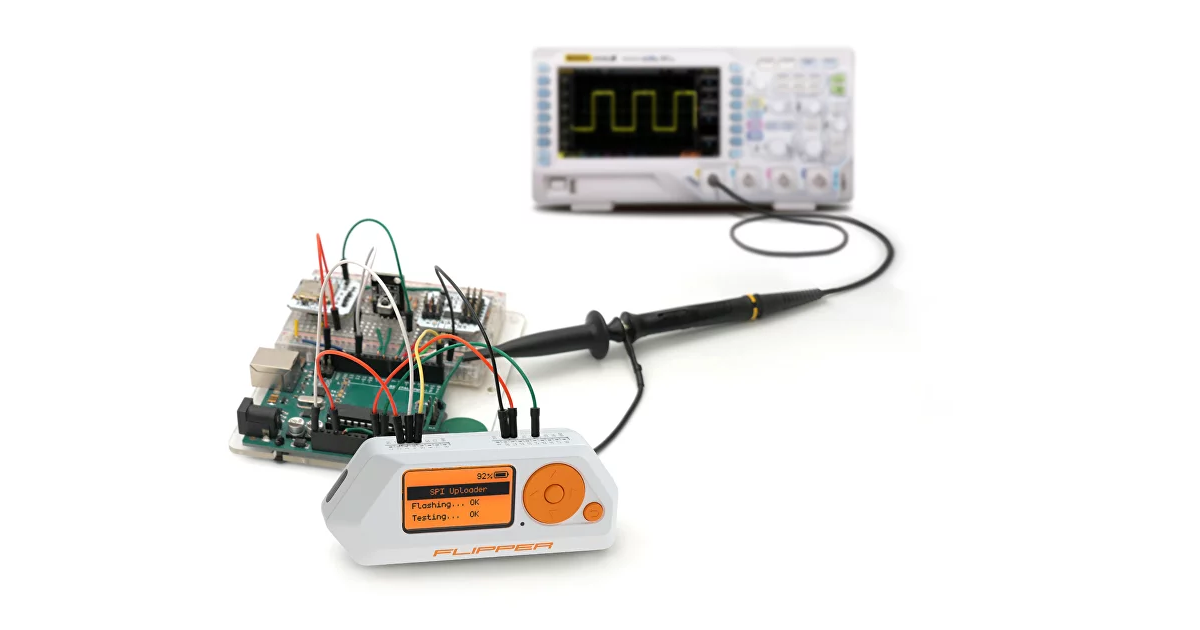
Get Familiar with the Tools!
To begin your journey into hardware hacking, it’s essential to have a basic foundation in electricity and electronics. This includes gaining familiarity with fundamental electronic tools and components such as PCB boards, breadboards, jumper wires, soldering irons, multi-meters, SPI Flash Programmers, USB-UART devices, and Flipper Zero, among others. You should also understand concepts like voltage, amperage, and resistance (ohms). Once you’ve acquired a grasp of these basics, you’ll be prepared to start your hardware hacking learning path. In my case, my prior experience made it less challenging for me.
Below is the list of essential tools and components to kickstart your hardware hacking journey. Stay tuned for the next post, where we’ll delve into the foundational concepts necessary before diving into hardware hacking.
BreadBoard

A Breadboard serves as a user-friendly and straightforward platform for constructing and evaluating electronic circuits without the need for soldering. This ingenious tool permits the interconnection of various electronic components via jumper wires, all without the use of solder. It excels as an invaluable aid in the circuit prototyping process, enabling you to refine your designs prior to committing them to a permanent PCB (Printed Circuit Board). This flexibility proves especially advantageous, particularly during the early stages of your electronics education when resources may be limited. By avoiding premature soldering, you can avoid the frustration of realizing your circuit doesn’t function as expected, necessitating the time-consuming task of desoldering and resoldering. Therefore, the breadboard stands as an indispensable tool for experimenting with and perfecting your circuits before their finalization on a PCB. You can use this in hardware hacking as well for various purposes.
Jumper Wire

A jumper wire is a wire with connectors at both ends that allows you to connect two points on a breadboard. These connectors come in different types, such as male-male, female-female, or male-female, giving you the flexibility to extend or connect wires as needed for your specific requirements. Typically, jumper wires are used for creating circuit connections on a breadboard without the need for soldering. However, in the context of hacking and cybersecurity, jumper wires can also be utilized for extracting data from a chip by identifying and accessing the debugging console on the board. This makes jumper wires versatile tools with various applications, ranging from electronics prototyping to more advanced tasks in the field of hacking.
Printed Circuit Board
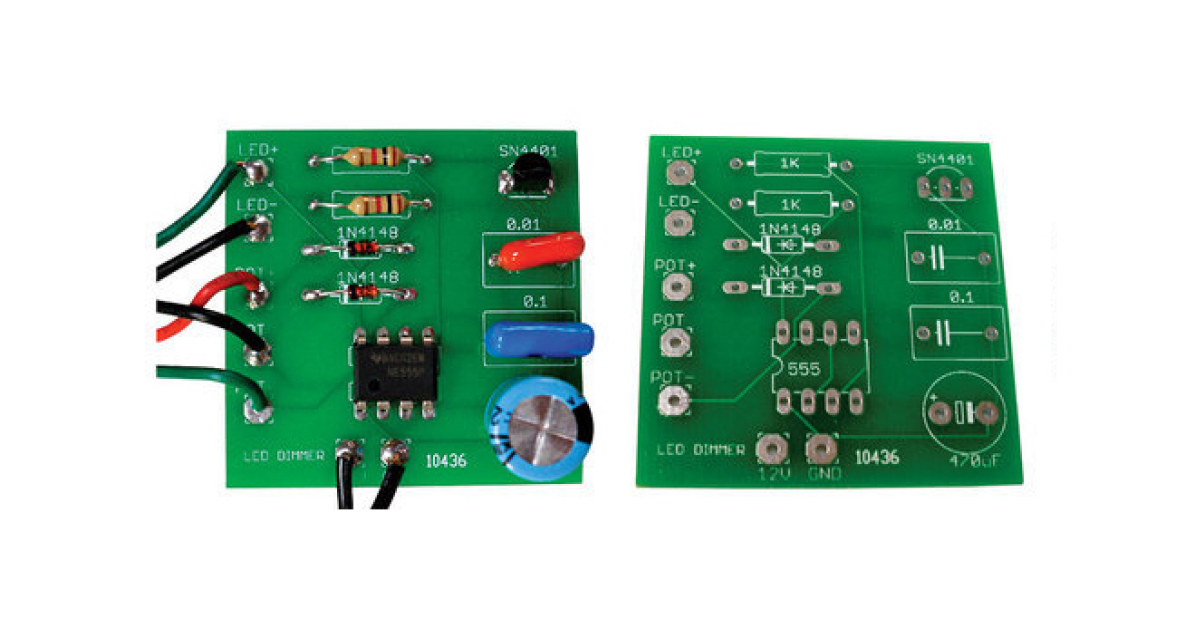
PCB boards represent the ultimate iteration of a product’s design. Initially, a prototype is crafted on a breadboard, where components are strategically positioned and connected using jumper wires. After rigorous testing and validation of the prototype, the design is solidified, and the PCB board’s creation commences. The PCB board serves as the definitive version of the product that finds real-world application.
The manufacturing process of a PCB board involves several steps. The design is transformed into a physical PCB by a specialized manufacturer. Subsequently, components are affixed to the board through soldering, a process that can be executed either manually or with automated machinery. In the final PCB board, instead of jumper wires, copper traces are employed to establish connections between components. These copper traces are shielded by a solder mask to avoid short circuit, with only the soldering points exposed, where components are securely attached.
Soldering Iron
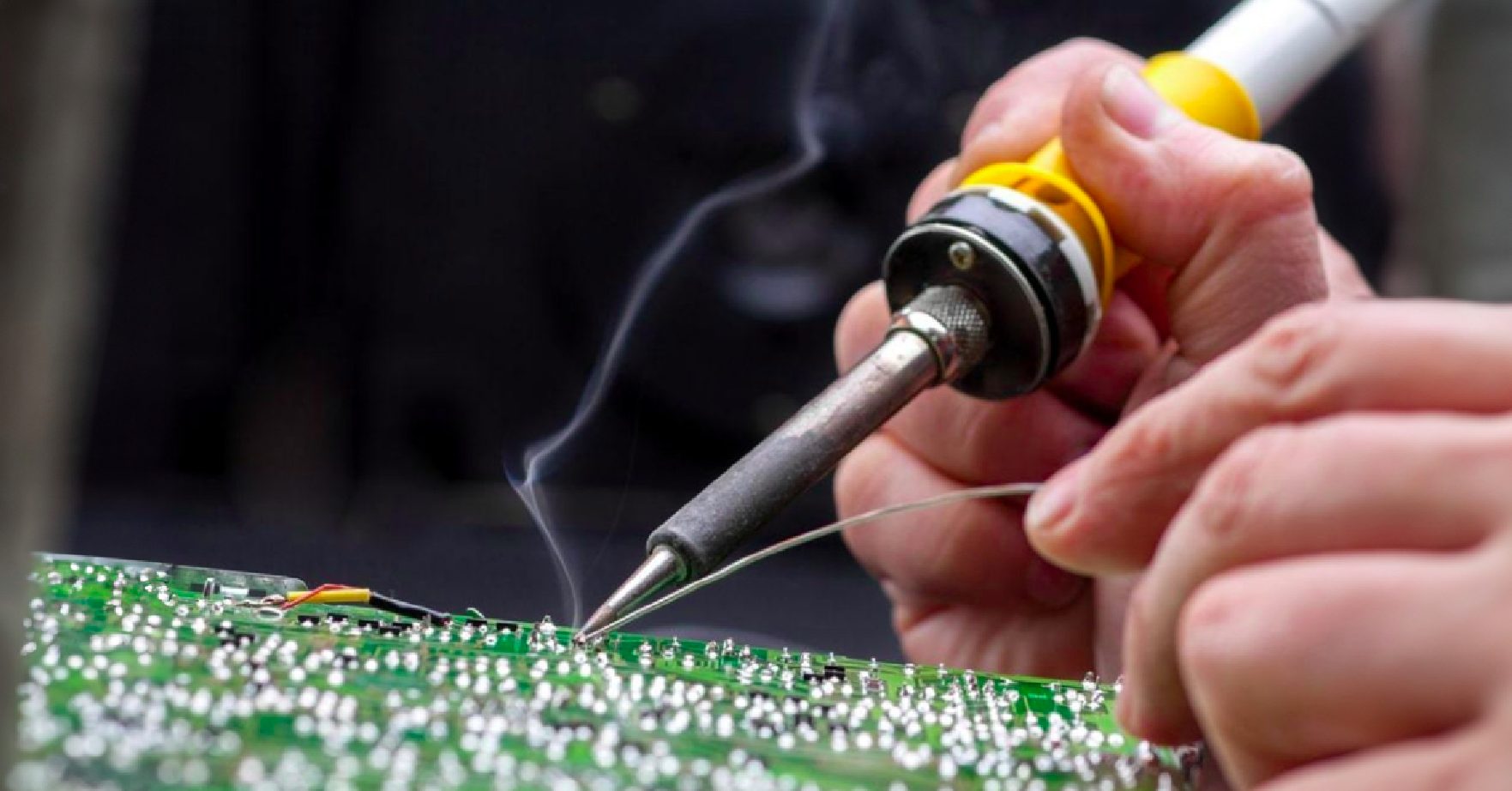
A soldering iron is a crucial tool in hardware hacking, serving as a heating device that melts soldering wire. It has a dual purpose, allowing for both the attachment and removal of electrical components and wires. This tool holds significant importance in hardware hacking, as it is indispensable for soldering wires to the PCB board. This soldering process grants access to the debugging console and facilitates the addition or removal of components from the board.
Multi-Meter
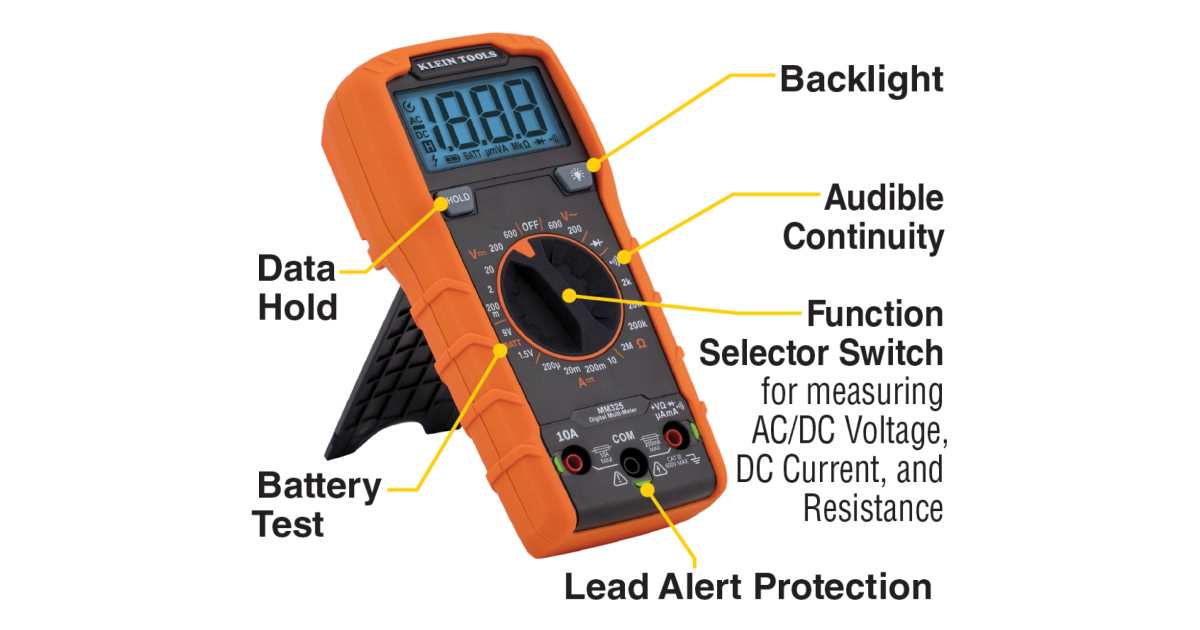
A multi-meter, just as the name suggests, is like a Swiss army knife for measuring and testing circuits. It’s really good at telling you about voltage, current, and resistance, and that’s why it’s a must-have tool for anyone into hardware hacking. You can use it to figure out how much voltage is running through a circuit or how much current is flowing. Plus, it comes in super handy when you’re on the hunt for a debugging console, especially when you’re measuring stuff like Tx, Rx, and GND pins. These measurements are key to our work. So, basically, the multi-meter is your go-to device when you need to get the lowdown on your circuits.
SPI Flash Programmer
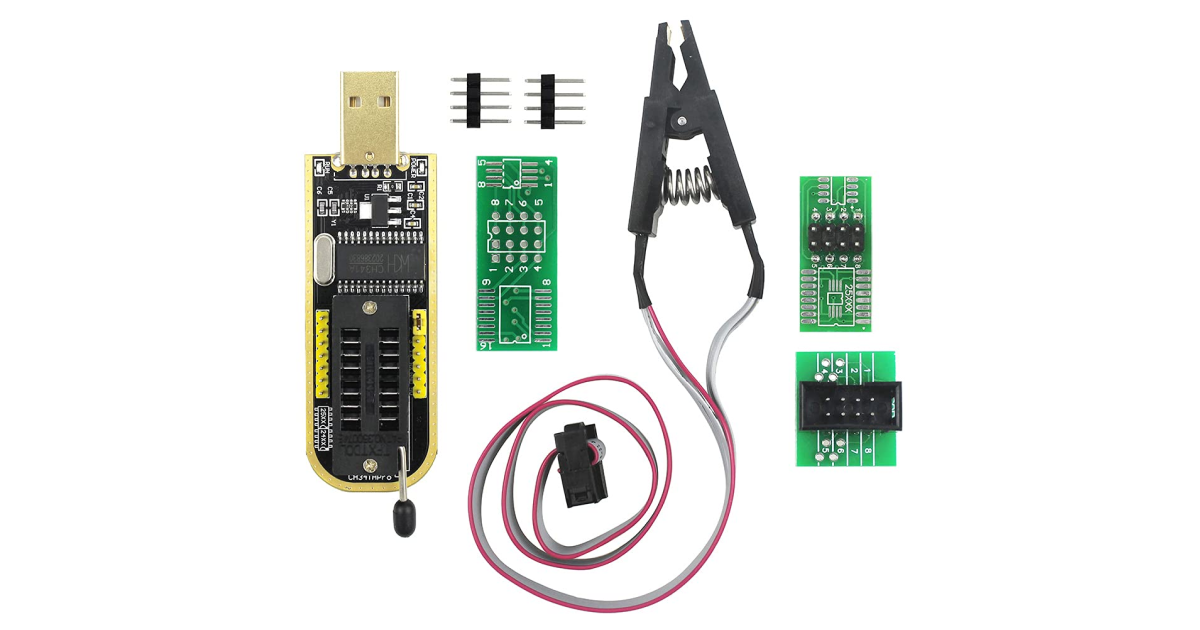
The SPI (Serial Peripheral Interface) Flash Programmer is a device that allows you to read and write data to the SPI flash memory chip on a PCB board. This is a crucial tool for hardware hacking, as it enables you to extract data from the chip and analyze it for vulnerabilities. The SPI Flash Programmer is also used to write data to the chip, which can be leveraged to exploit the device. This device is a must-have for hardware hacking, as it is used to extract and write data to the SPI flash memory chip. Many time you don’t get access to the system and you can’t dump the firmware. In such cases, you can use SPI Flash Programmer to dump the firmware from the chip. Below are the specification of CH341A SPI Flash Programmer.
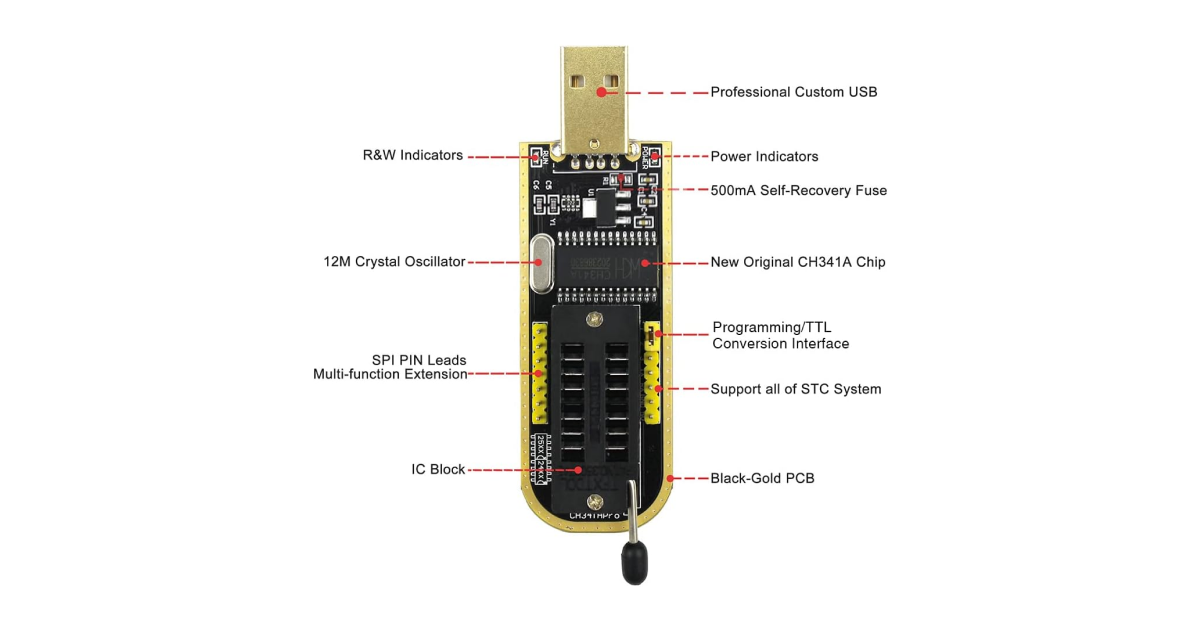
USB-UART
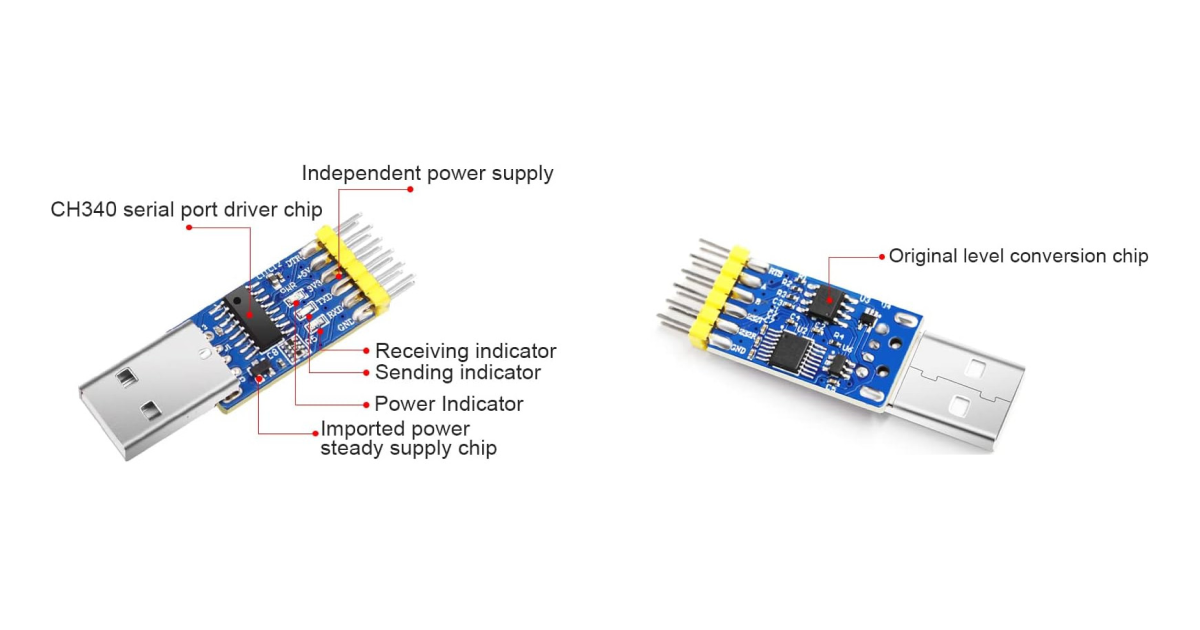
A USB-UART device assumes a pivotal role in facilitating communication with the chip on a PCB board. It acts as a conduit for transmitting and receiving data, rendering it an indispensable tool for hardware hacking enthusiasts. Visualize it as an intermediary that connects the circuit and your laptop or PC. Once you’ve soldered wires onto the exposed UART, direct access to UART data becomes unfeasible. This is precisely where the USB-UART device becomes indispensable.
UART, an acronym for Universal Asynchronous Receiver-Transmitter, is typically harnessed by system engineers for debugging or firmware uploads to the system. However, it is often left accessible inadvertently due to oversight, presenting an opportunity to exploit it for system access.
Above, you’ll find the detailed specifications of the USB-UART device.
Flipper Zero
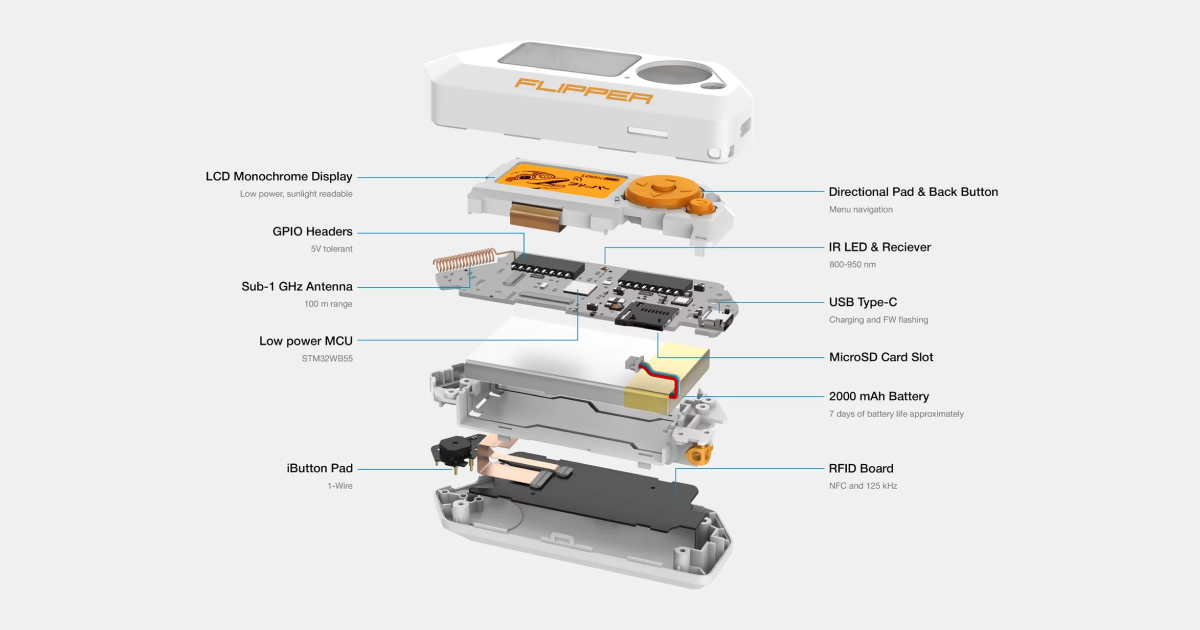
The Flipper Zero is a versatile device designed for security professionals specializing in frequency and hardware security. It serves as a multi-tool with diverse applications, boasting features such as a built-in USB-UART and SPI Flash Programmer, among others. This compact device proves exceptionally useful in the realm of hardware hacking, making it an essential tool for enthusiasts. With the Flipper Zero in your toolkit, you won’t need the separate USB-UART and SPI Flash Programmer tools since they are already integrated.
For your reference, please consult the GPIO pinout diagram of the Flipper Zero below. In our usage, we’ll focus on the UART and SPI pins, which are highlighted in red.
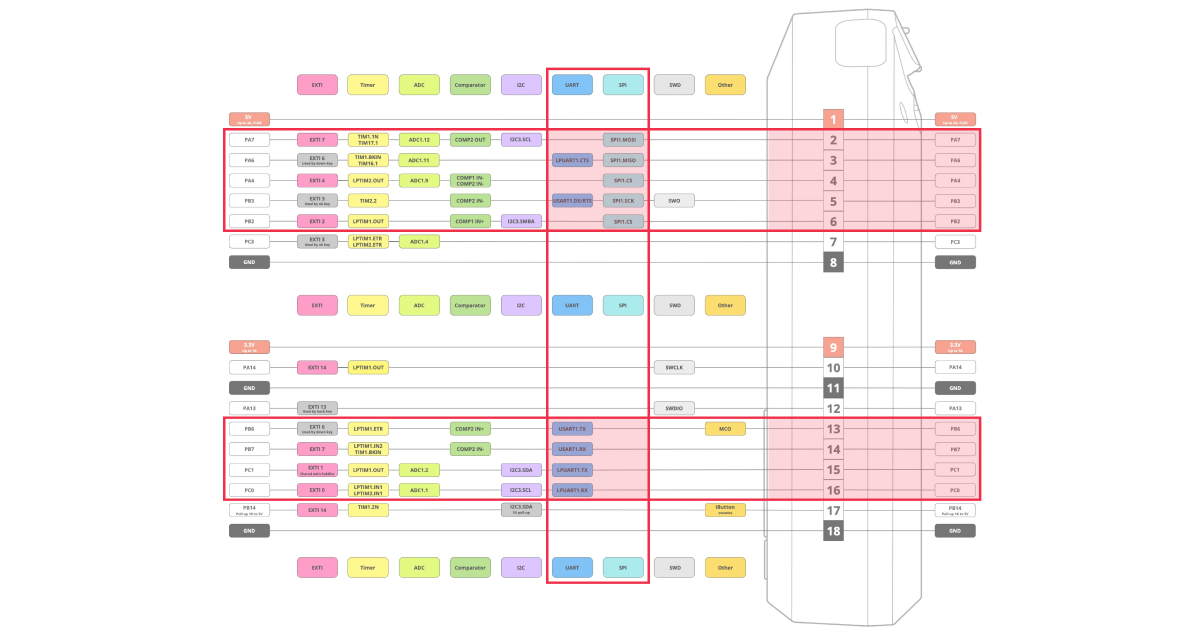
What’s Next?
In this post, I’ve introduced fundamental tools essential for initiating your journey into hardware hacking. In our upcoming post, we’ll delve into key foundational concepts that are crucial to grasp before diving into the world of hardware hacking.